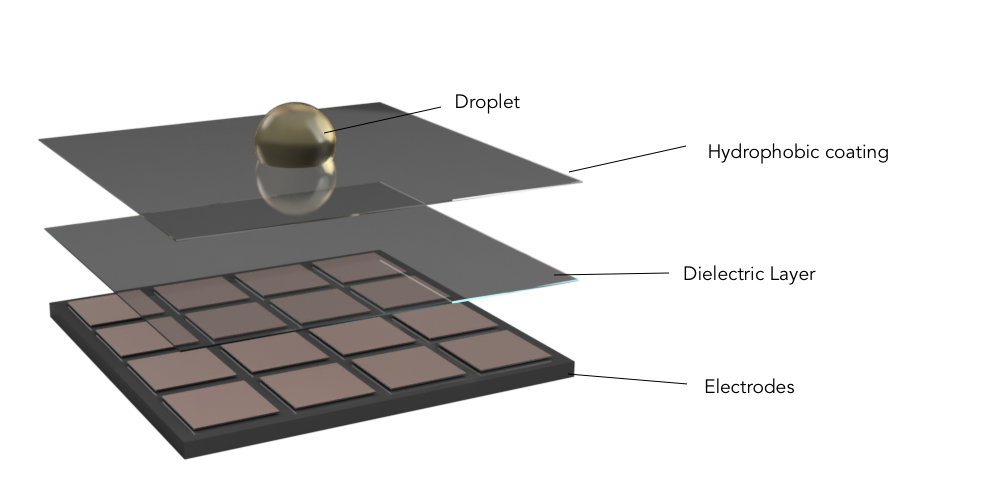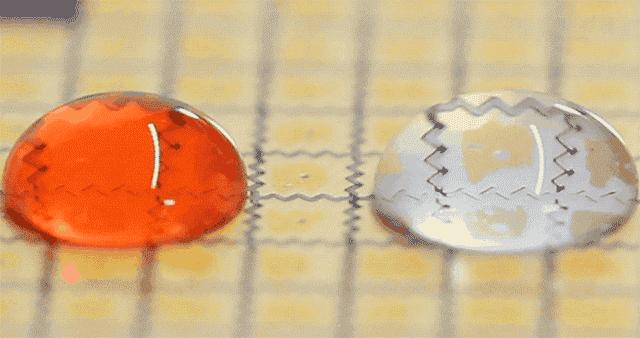When the form is so aesthetically pleasing, it can be hard to think about function.
Such is the challenge and the wonder of the “Programmable Droplets for Interaction,” a new interface by MIT’s Tangible Media Lab, that asks users to think of computers in a whole different way. Grossly simplified, every computer is a rock with lightning trapped inside, trained to do math and report it as light. With the droplet interface, the behind-the-scenes remains that same, but the display and the input itself becomes water on a special surface, a charmingly novel experience.
For artists, the interface provides a clever way to mix colors. While that may be of use to battlefield watercolorists, is there a broader application for the new interface among the rank-and-file? For example, could this technology provide an easy, wash-away form of communication for soldiers in the field? Or would it be more trouble than it’s worth?
To get there, first we have to understand how the new interface works, and then step back to see what, if any, advantage this offers over existing computers
Here’s the Tangible Media Lab describing how the technology works:
By my read, that means the droplets on the display can be set up, used once, and then physically wiped from the surface, the display no longer retaining any relevant information once the medium itself is gone.

Also of note is that, according to MIT, “the compact form factor of our Programmable Droplets device allows us to integrate it into a range of everyday objects -- paint palette, handheld devices, mirror and glass windows.” In the concept video, this is a novel way for a couple to leave each other messages, with one partner making a sketch on a smartphone and the sketch appearing in water droplets at the other end, in this case a foggy bathroom mirror. It is, in this form, an extremely ephemeral means of communication, a note left only so long as the water is in place on the screen.
There are observable and, therefore, snoopable parts of the communication from start to finish: the writing on the smartphone, the signal sent from the phone to the mirror, the circuitry of the mirror itself. But after the moment the image is made in water on the mirror, the message is there until swept away.

Easy and ephemeral electronic communications are difficult match to make. Phones and radios are perhaps the most durable example, though the universality of recording devices mean that long after the signal has passed recordings can remain. With most anything online, unique messages are not so much being sent but copied in multiple places at once, redundant copies appearing at both the sender and receiver’s end, and possible in the records of any intermediary to the exchange. If the droplet interface can simply move water as directed, and doesn’t store any record of how that water was moved, the message becomes human readable on the receiving end, but possibly unintelligible to anyone who collects the droplet interface afterwards.
Is that enough to make it useful to a soldier or Marine in the field? Maybe. The images could be more sophisticated than lines drawn in sand with sticks and more widely dispersed than something simply written on pen and paper, but it requires a scenario where the tablet can be set relatively flat and have distinct water droplets placed upon it. (Where the droplets are placed, too, could influence the message, possibly requiring cipher sheets to interpret how to set the display to receive a message). Yet there’s something to ephemeral electronics. In the past, DARPA’s funded research into electronics that work until they’re exposed to water, letting rain be a failsafe code to self-destruct for lost or hard-to-recover devices.
With a droplet screen relaying a message, if only for a moment, and then vanishing into an unremarkable tablet, it’s possible this droplet display has a use downrange. But maybe it’s better off, for now, in the hands of the artists.
Kelsey Atherton blogs about military technology for C4ISRNET, Fifth Domain, Defense News, and Military Times. He previously wrote for Popular Science, and also created, solicited, and edited content for a group blog on political science fiction and international security.








